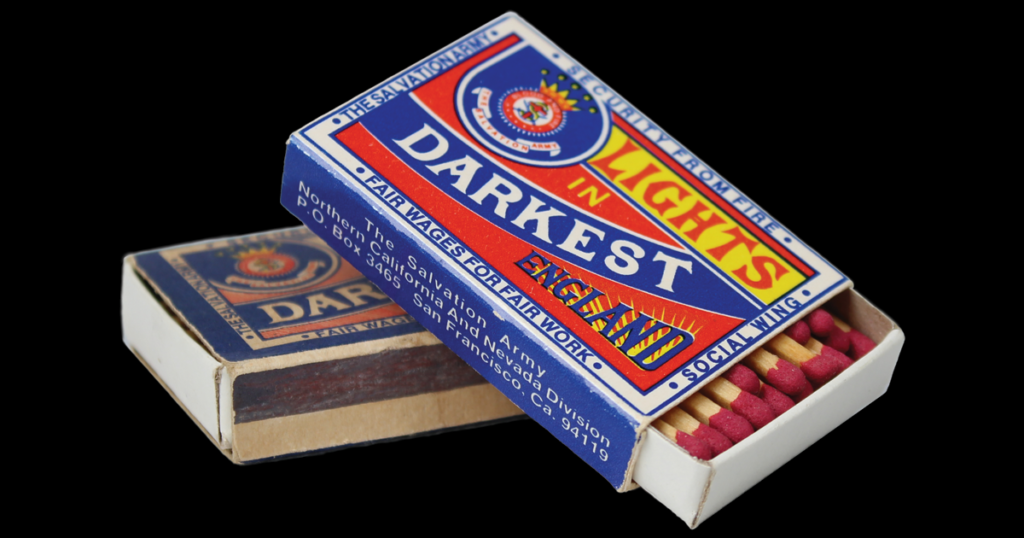The Small Light That Burned Bright
"It was the Founder who brought an innovative idea to help illuminate the lost souls in darkest England into the light of the Lord."
William Booth was always discovering new ways in which he could make a deep impact in the culture and chaos in which he lived. One of the ways he was going to lead others to “the way out” from the depths of “darkest England” was by showing how serious he was about addressing the issues of his day. In no special order, Booth was willing to fight against poverty, prostitution, vagrancy and vice. He knew to fight these forces of the enemy, he would need a battle plan.
One issue he saw in his day was the Match Women’s Strike of 1888. Several women were employed at the Bryant and May Match Factory in East London. They went on strike, protesting the dangerous conditions they worked in. This included low pay, long hours and health risks, such as a medical condition known as “phossy jaw.” This was a condition brought on through the match production process, which contaminated the workers’ hands with toxic yellow phosphorus, causing the workers jawbones to decay with potentially fatal results.
The Salvation Army went into action and opened their own match factory with a safer and more ethical production process in 1891 under the direction of Commissioner Elijah Cadman. The matches were dubbed “Lights in Darkest England” and were promoted by The War Cry and the Darkest England Gazette. Listed on the boxes were the reasons why one should buy the Army matches, including phrases like, “These matches were produced to raise the wages of the match-box makers, to fight against sweating and to help the poor to help themselves by labor.”
It was the Founder who brought an innovative idea to help illuminate the lost souls in darkest England into the light of the Lord.







